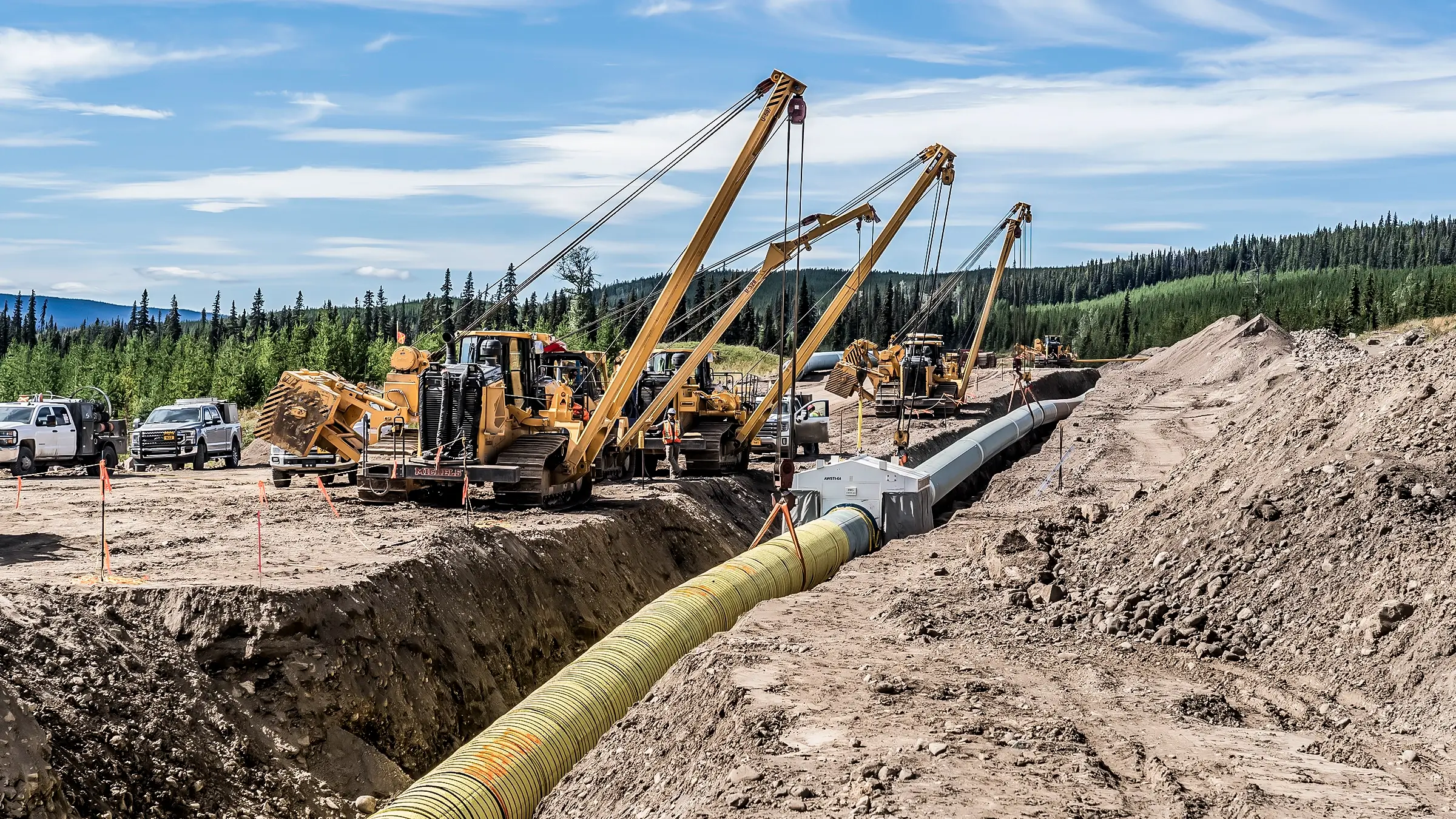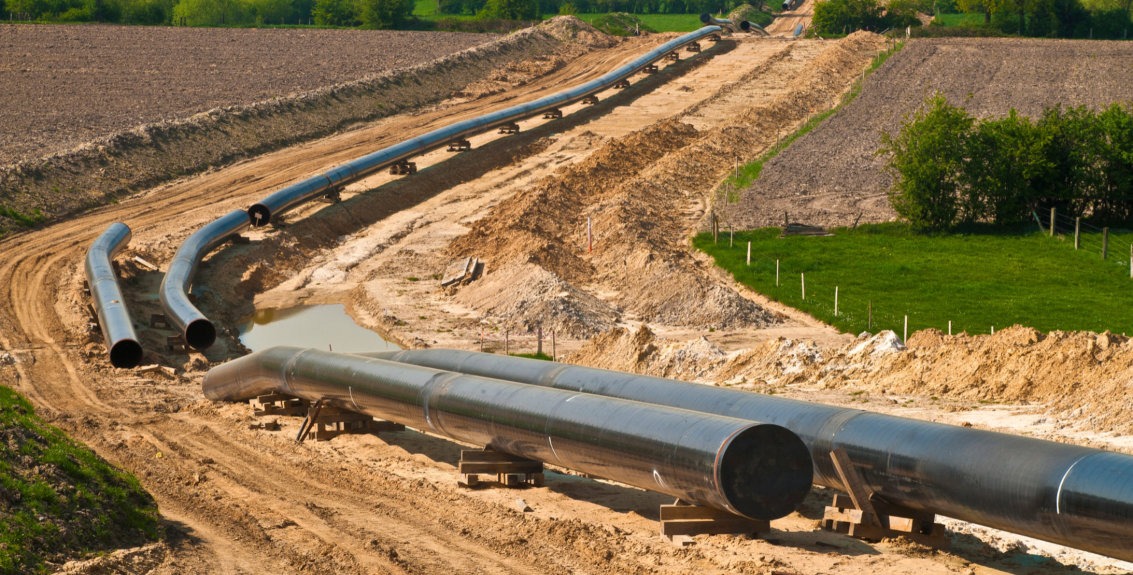A Comparison of Pipe Materials With Help From Creek Pipe Company
What You Must Find Out About Pipe Trenching Providers: A Thorough Introduction of Available Options
Pipe trenching services are vital for the installment and maintenance of underground utilities. They involve various methods customized to specific demands and settings. Recognizing these methods is crucial for reliable project implementation. Each option offers its very own set of advantages and challenges. As the demand for effective energy monitoring rises, understanding what to take into consideration when selecting a trenching solution ends up being crucial. What variables should one prioritize to guarantee success?
Understanding Pipe Trenching: What It Is and Why It Matters
Although often neglected, pipe trenching is a crucial process in numerous construction and utility tasks. This technique includes excavating slim trenches to promote the setup of pipes for water, gas, sewage, and telecommunications. The value of pipe trenching hinges on its role in ensuring that these important systems are appropriately incorporated right into facilities, enabling the secure and efficient shipment of needed services.Proper trenching is essential for keeping the integrity of pipes and decreasing risks connected with soil erosion and cave-ins. It additionally permits effective inspections and upkeep of below ground utilities. Additionally, understanding the local regulations and ecological considerations is important, as inappropriate trenching can lead to expensive hold-ups and legal problems. Ultimately, pipeline trenching works as the foundational action that supports various building and construction undertakings, making it a considerable facet of contemporary facilities growth.
Usual Trenching Approaches for Below Ground Utilities
In the domain name of below ground utilities, numerous trenching approaches play an important role in installation and upkeep - Creek Pipe pipeline construction. The open-cut trenching method, directional dull technique, and hydro excavation procedure each deal distinct benefits depending upon the details job needs. Comprehending these methods is essential for efficient and effective utility management
Open-Cut Trenching Method
Open-cut trenching is an extensively used method for setting up below ground energies, particularly when the depth and width of the trench allow for effective access. This strategy involves digging deep into a trench along the recommended course of the utility, offering straight exposure and ease of access for installment. It is specifically useful for tasks that call for considerable excavation, as it facilitates fast setup and assessment. Nonetheless, it also necessitates mindful preparation to reduce interruption to the surrounding area, consisting of website traffic and existing frameworks. Open-cut trenching is most effective in open areas where the dirt problems agree with, however it might be limited in metropolitan atmospheres because of the presence of existing energies and other below ground barriers.
Directional Boring Strategy

Hydro Excavation Refine
How does hydro excavation stick out among typical trenching approaches for below ground utilities? Hydro excavation makes use of high-pressure water and vacuum modern technology to safely remove dirt, enabling specific digging around delicate below ground energies. This technique reduces the threat of damaging existing facilities compared to typical mechanical excavation. By utilizing water to loosen up the soil, hydro excavation supplies a much less intrusive method, lowering the potential for dirt compaction and ensuring a cleaner worksite. Additionally, the process improves exposure during excavation, enhancing total precision and effectiveness. Hydro excavation is especially helpful in metropolitan locations where utility lines are largely loaded, making it a favored choice for professionals concentrated on safety and security and accuracy in below ground projects.
Advantages of Trenching Services
While different approaches exist for setting up below ground energies, trenching solutions offer distinct benefits that make them a recommended choice for lots of jobs. One significant benefit is the cost-effectiveness of trenching, as it typically calls for less specialized equipment compared to alternatives like hydro excavation. This usually leads to reduced labor and functional prices. In addition, trenching can accommodate a wide variety of energy kinds, consisting of water, drain, and gas lines, giving adaptability for contractors.Moreover, trenching enables efficient accessibility to multiple lines in a solitary excavation, minimizing disturbance to the surrounding area. The procedure also allows accurate installation and repair service, which is important for sticking to regulative criteria and making certain lasting reliability. Inevitably, trenching can be performed reasonably rapidly, decreasing project timelines and enabling faster solution remediation. These benefits collectively make trenching services a practical alternative for several underground utility projects.
Drawbacks and Challenges of Trenching
Despite the various benefits of trenching solutions, there are significant drawbacks and challenges that must be considered. One significant obstacle is the potential for dirt instability, which can result in collapses, positioning risks to employees and tools. Additionally, trenching can interrupt existing utility lines, requiring careful planning and coordination to prevent service disturbances. The procedure can also be taxing, particularly in metropolitan areas where room is restricted and accessibility is restricted. In addition, trenching might call for substantial authorizations and regulatory compliance, including complexity and potential delays to jobs. Environmental issues, such as soil disintegration and damages to regional ecosystems, can emerge from inappropriate trenching techniques. The prices linked with trenching, consisting of labor and devices, can rise if unforeseen problems occur throughout the task, making it necessary for stakeholders to evaluate these challenges against the advantages when taking into consideration trenching services.
Trick Aspects to Think About When Choosing a Trenching Service
Selecting the best trenching solution can significantly impact the success of a project. Numerous crucial elements must be examined to guarantee a suitable choice. Initially, the company's experience and proficiency in trenching procedures are important; a reputable service with a strong track document is generally a lot more reputable. Next, evaluating the tools used is basic, as contemporary machinery can enhance effectiveness and accuracy. Furthermore, it is considerable to consider the series of services supplied, consisting of excavation deepness and soil kind handling, to confirm they meet details job requirements.Another aspect to testimonial is the business's track record; client testimonials and reviews can give understandings into previous efficiency. Acquiring in-depth quotes that outline costs and timelines will assist in budget plan monitoring. Finally, confirming compliance with regional laws and industry standards is important for staying clear of possible lawful problems. By assessing these aspects, customers can make a notified decision when selecting a trenching solution.
Precaution in Pipe Trenching
In pipeline trenching, precaution are vital to ensuring employee defense and website honesty. Key parts consist of using personal protective equipment, comprehensive excavation site assessments, and well-defined emergency situation response protocols. Applying these measures greatly decreases dangers connected with trenching operations.
Personal Protective Equipment
Safety and security in pipeline trenching greatly relies upon the proper use individual protective devices (PPE) Employees ought to wear difficult hats to shield against falling things, as well as high-visibility vests to improve their visibility on-site. Steel-toed boots are vital for foot protection against heavy you could look here tools and materials. Furthermore, handwear covers are vital for hand safety, particularly when handling harsh or sharp objects. Respirators may likewise be essential in environments with dirt or dangerous fumes. Eye defense, such as safety goggles, must be used to shield versus particles. Finally, listening to defense is crucial in loud workplace. By review sticking to PPE standards, employees can substantially lower the danger of injury and ensure a safer trenching procedure.
Excavation Website Assessment
Correctly inspecting the excavation website is a fundamental action in ensuring a safe pipe trenching procedure. This procedure involves reviewing the site for potential risks such as underground utilities, unsteady dirt conditions, and close-by structures. A comprehensive assessment permits the identification of risks that can compromise employee safety and security. Additionally, verifying the dirt kind and dampness levels can help identify proper shoring techniques to prevent trench collapses. It is crucial to ensure that the site is free from debris and that proper signs is shown to inform workers of ongoing operations. Routine assessments throughout the project can additionally aid identify any modifications in site problems, allowing prompt modifications to safety actions and work protocols.

Emergency Action Protocols
Emergency action procedures are important in mitigating dangers connected with pipeline trenching procedures. These protocols guarantee that all employees are prepared to act quickly and properly in emergencies. Key elements consist of normal security drills, clear interaction channels, and assigned emergency situation leaves. In addition, first-aid sets and emergency call numbers should be readily easily accessible on-site. Trenching operations need to likewise consist of procedures for handling dangerous situations, such as cave-ins or energy strikes. Training employees on recognizing potential risks and recognizing their duties throughout an you could try this out emergency situation is vital. Moreover, preserving an updated site safety strategy can considerably enhance action efficiency. On the whole, reliable emergency readiness cultivates a more secure working atmosphere and decreases the influence of unanticipated occurrences.
Price Considerations for Trenching Services
Understanding the economic effects of trenching solutions is important for project preparation and budgeting. The prices associated with trenching can differ commonly based on several factors, consisting of task dimension, dirt type, and deepness of the trench. Labor costs commonly represent a considerable portion of the overall expense, as competent operators are essential for reliable implementation. In addition, devices rental fees can add to the total budget, particularly for specialized machinery.Site availability is an additional crucial variable; difficult surface might necessitate extra sources, increasing expenses. Permitting and governing compliance can also include in expenses, especially in urban locations where guidelines are stringent.Lastly, unpredicted complications, such as running into existing utilities, can cause unforeseen costs and delays. As a result, acquiring thorough estimates from trustworthy trenching provider is vital for precise budgeting and guaranteeing successful job completion.
Often Asked Questions
The length of time Does a Common Pipe Trenching Task Take?
The duration of a common pipeline trenching job varies considerably based on variables such as depth, soil problems, and project intricacy. Generally, it can take anywhere from a few days to numerous weeks to complete.
What Tools Is Commonly Made Use Of in Pipe Trenching?

Are There Environmental Rules for Trenching Activities?
Environmental laws for trenching tasks commonly require conformity with regional, state, and government standards. These laws intend to reduce environmental disturbance, shield water sources, and warranty appropriate waste administration during excavation and installation procedures.
Can Trenching Solutions Be Combined With Other Construction Tasks?
Trenching services can indeed be integrated with numerous building tasks. By working with initiatives, efficiencies can be achieved, lessening interruptions while making sure that all needed facilities job is completed in a timely and cost-efficient fashion.
What Are Typical Soil Types Run Into in Trenching?
Typical soil kinds encountered in trenching include clay, sand, silt, and loam. Each type presents unique difficulties, affecting excavation techniques and security, requiring cautious preparation to assure risk-free and efficient trenching operations.